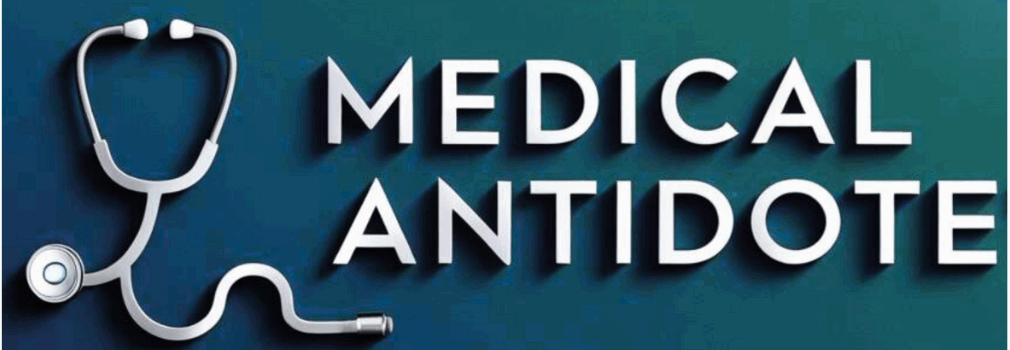Last updated on July 23rd, 2025 at 08:11 am
Do you have an idea of how to tell if your lungs are inflamed? Lung inflammation, also known as pneumonitis, is a condition where your lungs become irritated and inflamed due to various causes. Identifying signs of lung inflammation is crucial for early detection and appropriate medical intervention. Here, I will explore the common signs and symptoms of lung inflammation for you, along with methods to diagnose this condition and timely treatment.
Lung Inflammation Symptoms
These are the signs of inflammation in the lungs:
- Persistent Cough: One of the initial signs of lung inflammation is a persistent or chronic cough. The cough may produce mucus or phlegm and might be accompanied by a sore throat.
- Shortness of Breath: Feeling breathless or experiencing difficulty in breathing, especially during physical activities or even at rest, can indicate lung inflammation. The inflamed lungs struggle to efficiently take in oxygen and expel carbon dioxide.
- Chest Pain or Tightness: Lung inflammation can cause chest pain or a feeling of tightness in the chest. This discomfort may worsen with deep breaths or coughing.
- Wheezing: Wheezing is a high-pitched whistling sound that occurs during breathing. It is caused by narrowed airways, which can be a result of inflammation in the lungs.
- Fatigue: Lung inflammation can lead to decreased oxygen intake, causing fatigue, weakness, and reduced energy levels. Individuals may feel excessively tired and lethargic.
- Fever and Chills: Lung inflammation can trigger an immune response, resulting in a fever. Elevated body temperature and chills may accompany the inflammation.
- Phlegm with Blood: If lung inflammation persists or worsens, it can cause blood-streaked phlegm or coughing up blood, known as hemoptysis. This warrants immediate medical attention.
(How long do these symptoms of lung inflammation last? Discover in “How Long Does Lung Inflammation Last?“)
Diagnosing Lung Inflammation
- Physical Examination: A thorough physical examination by a healthcare professional involves assessing symptoms, listening to the lungs with a stethoscope for abnormal sounds, and checking for signs of respiratory distress.
- Chest X-ray: An X-ray provides images of the lungs, allowing healthcare professionals to identify areas of inflammation, infection, or abnormalities in lung tissue.
- CT Scan: A computed tomography (CT) scan provides detailed cross-sectional images of the lungs, enabling a more precise assessment of lung inflammation and associated conditions.
- Pulmonary Function Tests (PFTs): PFTs measure lung function, including the capacity to inhale and exhale, to assess the severity of inflammation and its impact on breathing.
- Sputum Analysis: Analyzing a sample of mucus or phlegm can help identify the presence of infection or inflammation in the respiratory tract.
- Blood Tests: Blood tests, including a complete blood count (CBC) and markers of inflammation like C-reactive protein (CRP) and erythrocyte sedimentation rate (ESR), can provide valuable information about the presence and extent of inflammation.
- Bronchoscopy: A bronchoscopy involves inserting a thin, flexible tube with a camera into the airways to visualize the lungs, collect tissue samples, and assess for inflammation or infection.
Inflamed Lungs Treatment
Inflamed lungs, medically referred to as pneumonitis or pneumonia, can result from infections, autoimmune diseases, environmental irritants, or aspiration. Treatment depends on the cause, severity, and patient’s overall health. Below is a comprehensive guide based on medical and pharmaceutical expertise.
I. General Management Strategies
Hospital vs. Home Care
- Mild cases can be managed at home with medication, rest, and hydration.
- Severe cases (e.g., respiratory distress, sepsis, or immunocompromised patients) require hospitalization with oxygen support and intravenous (IV) medications.
Supportive Care
- Rest & Hydration – Ensures proper lung function and prevents dehydration.
- Smoking Cessation – Smoking worsens lung inflammation and delays recovery.
- Avoid Lung Irritants – Such as pollutants, dust, and allergens.
II. Pharmacological Treatment Based on the Underlying Cause
A. Infectious Pneumonitis (Pneumonia) – Bacterial, Viral, Fungal, or Parasitic
1) Bacterial Pneumonia (Most Common Cause of Inflamed Lungs)
First-Line Antibiotic Therapy (Depending on the suspected bacteria):
- Outpatient Treatment (Mild Cases)
- Amoxicillin-clavulanate OR
- Macrolides (Azithromycin, Clarithromycin) – Especially for atypical bacteria (e.g., Mycoplasma pneumoniae)
- Hospitalized Patients (Moderate-Severe Cases)
- IV Ceftriaxone + Azithromycin OR
- Levofloxacin (Fluoroquinolone) – For severe or drug-resistant cases
- ICU Patients (Severe Pneumonia, Sepsis, or Respiratory Failure)
- Piperacillin-Tazobactam or Meropenem (For broad-spectrum coverage)
- Vancomycin or Linezolid (If MRSA is suspected)
Adjunctive Therapy
- Antipyretics – Paracetamol or Ibuprofen for fever and inflammation.
- Cough Suppressants or Expectorants – If the cough is excessive or productive (e.g., Guaifenesin).
- Bronchodilators (if bronchospasms occur) – Salbutamol inhalers.
2) Viral Pneumonia (Influenza, COVID-19, RSV, Adenovirus, etc.)
Antiviral Medications (Only if Needed)
- Influenza Pneumonia – Oseltamivir (Tamiflu) or Zanamivir (Relenza) within 48 hours of symptoms.
- COVID-19 Pneumonia – Antivirals like Nirmatrelvir/Ritonavir (Paxlovid) or Remdesivir (for severe cases).
- RSV (Respiratory Syncytial Virus) in Infants/Elderly – Ribavirin (rarely used).
Corticosteroids (If Severe Inflammation)
- Dexamethasone or Prednisone (especially in COVID-19 with hypoxia).
Oxygen Therapy
- If oxygen saturation (SpO₂) drops below 92%, supplemental oxygen is required.
3) Fungal Pneumonitis (Common in Immunocompromised Patients)
Antifungal Medications
- Aspergillosis – Voriconazole.
- Histoplasmosis or Coccidioidomycosis – Itraconazole or Amphotericin B (severe cases).
4) Parasitic Pneumonia (Rare, in Immunocompromised Patients)
Antiparasitic Drugs
- Pneumocystis jirovecii (PCP) in HIV/AIDS – Trimethoprim-Sulfamethoxazole (Bactrim).
B. Non-infectious pneumonitis (Irritant, Autoimmune, or Aspiration-Related)
1) Hypersensitivity Pneumonitis (Allergic or Irritant-Induced)
Avoidance of Triggers – Mold, bird droppings, chemicals, or occupational exposure.
Corticosteroids – Prednisone (High dose, then taper gradually).
2) Autoimmune-related pneumonitis (E.g., Rheumatoid Lung Disease, Lupus, Sarcoidosis)
Immunosuppressive Therapy
- Corticosteroids (Prednisone, Methylprednisolone).
- Disease-modifying drugs (Methotrexate, Azathioprine, or Rituximab in severe cases).
3) Aspiration Pneumonitis (From Inhaled Stomach Contents)
Supportive Oxygen Therapy
Antibiotics (If Secondary Infection Develops) – Piperacillin-Tazobactam or Clindamycin.
Head Elevation & Swallowing Therapy – Prevents recurrence in high-risk patients.
III. Advanced Treatment for Severe Lung Inflammation Cases
A. Oxygen Therapy & Ventilation Support
Nasal Cannula or Face Mask – If mild hypoxia (SpO₂ 88-92%).
High-Flow Nasal Oxygen or Non-Invasive Ventilation (CPAP/BiPAP) – If moderate distress.
Mechanical Ventilation (Intubation in ICU) – If severe respiratory failure (ARDS).
B. Anti-Inflammatory & Immunomodulatory Therapies
Corticosteroids – For inflammation-related lung damage (e.g., Dexamethasone in COVID-19 ARDS).
IL-6 Inhibitors (Tocilizumab in severe COVID-19 cases with cytokine storm).
Long-Term Management & Prevention
Vaccination (Prevention is Key!)
- Pneumococcal Vaccine (PPSV23, PCV15/PCV20) for High-Risk Patients.
- Influenza Vaccine (Annual).
- COVID-19 Vaccination (Up to Date).
Pulmonary Rehabilitation (For Chronic Lung Inflammation)
- Breathing Exercises & Physiotherapy – Prevent lung stiffness.
Lifestyle Modifications
- Quit Smoking & Avoid Pollutants – Protect lung tissue.
- Manage Underlying Conditions (e.g., Asthma, COPD, GERD, Autoimmune Diseases).
Detecting signs of lung inflammation early on is crucial for timely diagnosis and appropriate treatment. If you experience persistent symptoms indicative of lung inflammation, it’s essential to consult a healthcare professional promptly for a thorough evaluation and diagnosis. Seeking timely medical care can help you to manage lung inflammation effectively and prevent further complications.
Treatment of inflamed lungs depends on the underlying cause, severity, and patient condition. Bacterial infections require antibiotics, viral infections may need antivirals, fungal cases demand antifungals, and autoimmune or irritant-related inflammation benefits from corticosteroids and immunosuppressants. Oxygen therapy, mechanical ventilation, and supportive care play vital roles in severe cases. Prevention with vaccination, lifestyle changes, and early intervention significantly improves outcomes.





Thanks for sharing. I read many of your blog posts, cool, your blog is very good.